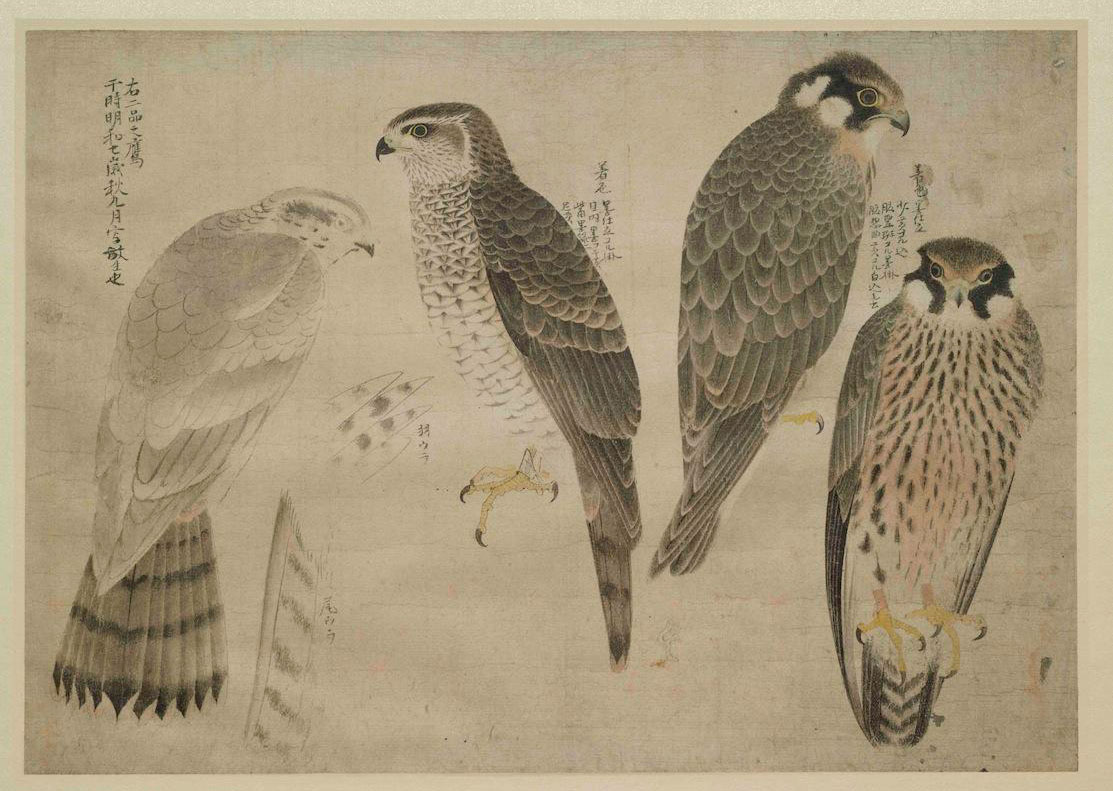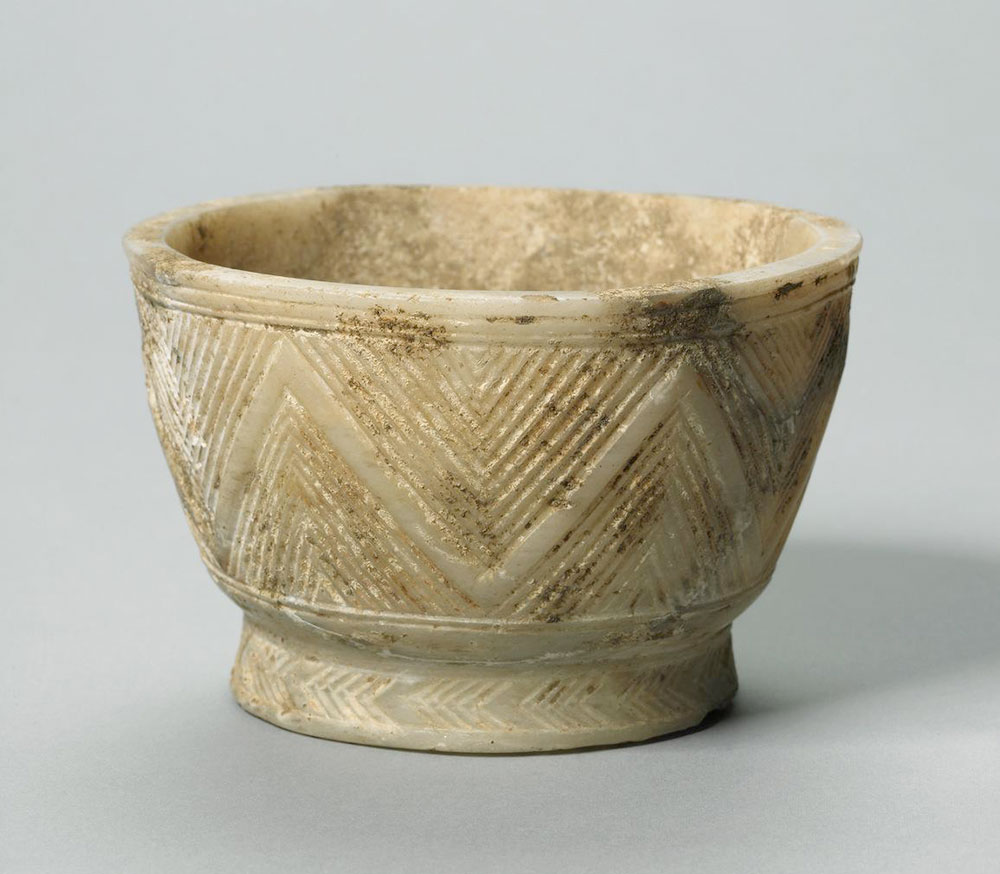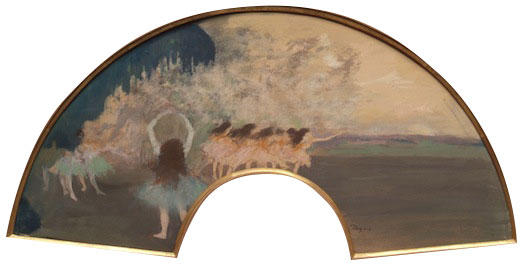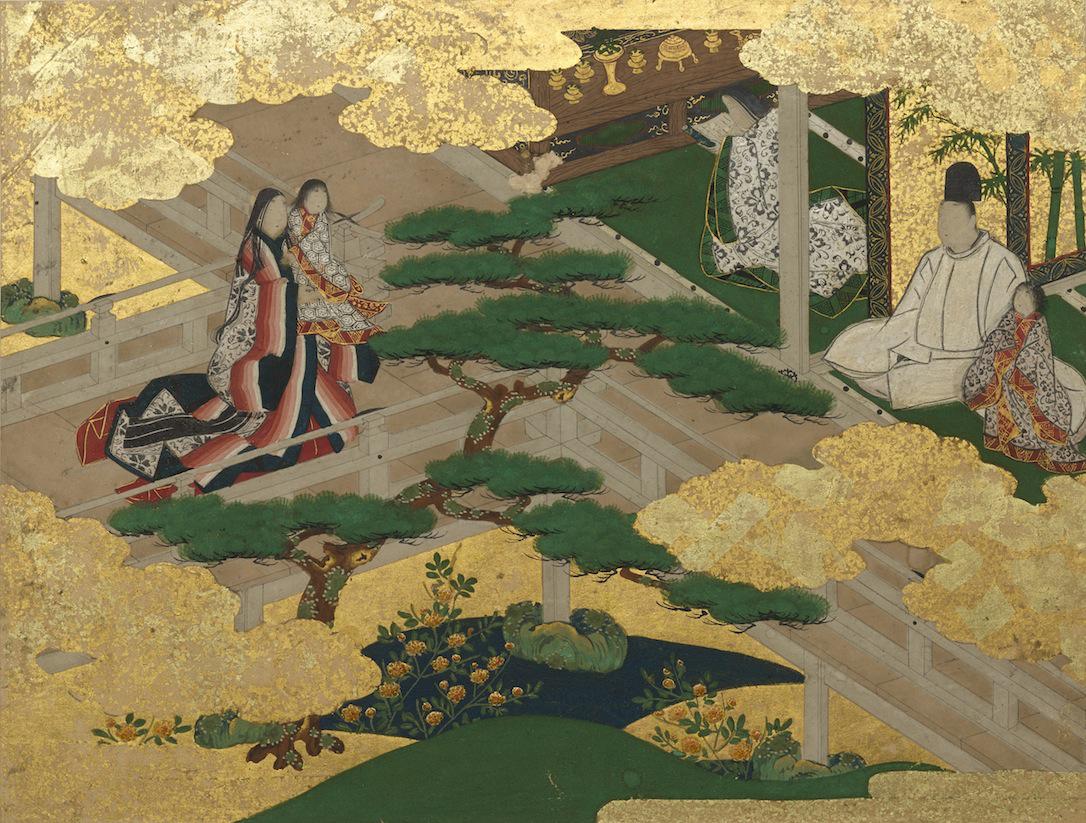2019年度の展覧会
花鳥虫魚を描く−応挙・広重・シーボルト−
2019年4月14日(日)〜6月2日(日)
所蔵品の中から、動物や植物など生きものの姿や形をとらえた絵に着目して、浮世絵版画も含めた江戸時代以降の日本の絵画と、19世紀以降のヨーロッパで制作された版画を選び、両者を同時にご覧いただく、当館として初めての展覧会です。日本の絵画は、円山応挙の写生図をはじめ、葛飾北斎や歌川広重など著名な絵師が描いた浮世絵版画と、熊谷守一や高間惣七の油彩による現代の静物画を展示します。ヨーロッパの版画は、シーボルトが出版した『日本動物誌』と『日本植物誌』から手彩色による石版画を展示し、同時期に出版されたイギリスの野生植物図譜やアジアの鳥類図譜も紹介します。
※会期中展示替えを予定しています。
ジャパニーズ プリント−久保惣コレクションでたどる版の歴史−
2019年6月23日(日)〜8月18日(日)
奈良時代に制作された世界最古の印刷物といわれる「木造 百万塔」に収められた陀羅尼経から、江戸時代の浮世絵版画や版本まで久保惣コレクションに収蔵される木版や銅版による印刷物を歴史的な展開をおって展示します。
平安時代の摺仏や、江戸時代初期の木活版本である嵯峨本、拓本の技法を応用した伊藤若冲の拓版画、司馬江漢の銅版画など、多様な技法で制作された版画をご覧いただきます。版本については、久保惣コレクションに加え、貝塚茂樹氏(京都大学名誉教授)、佐々木剛三氏(早稲田大学名誉教授)の旧蔵書もあわせて展示します。
※会期中展示替えを予定しています。
玉器とガラス器−中国古代とヨーロッパ近代を中心に−
2019年9月1日(日)〜10月20日(日)
光を通すという共通の特徴を備える玉とガラスをテーマとして、中国とヨーロッパの玉器やガラス器を所蔵品から紹介します。玉は鉱物の一種で中国では新石器時代より貴重視され、現代に至るまで各種の工芸品が作られてきました。古代においては質感が似ていることから玉器に倣ったガラス器が作られたり、近世には複数の色ガラスを用いた鮮やかな彩りの器が作られています。また、地中海地域の古代の色ガラスをはじめ、19世紀後半から20世紀初め頃のボヘミアガラスなどヨーロッパのガラス器も展示し、中国の作品とともに玉やガラスの素材の美しさや精緻な細工を鑑賞していただく展覧会です。
絵画でランデヴー−東西美術の出逢い−
2019年11月2日(土)〜12月22日(日)
「画家は旅をする。感性は巡り逢う。」
画家は、時に多くの旅をしてきました。旅や移動は環境や交友関係の変化をもたらし、それはしばしば画家本人とその作品にも強い影響を与えます。
本展覧会では「旅」や「出逢い」をテーマとし、葛飾北斎、伊藤若冲、モネ、ルノワールなど、日本人にも親しみのある日本とヨーロッパの作家による人物と風景画を中心にご紹介します。東西で異なる絵画表現や作家の様々な個性を感じ、絵画の魅力をお楽しみください。
なお、本展覧会では東京富士美術館に出品協力をいただき、和泉市久保惣記念美術館の所蔵品とともにご紹介します。東京と大阪、ふたつの都市が絵画で結ばれる展覧会です。
※会期中展示替えを予定しています。
常設展
絢爛たる源氏絵−重要文化財 源氏物語手鑑−
2020年1月19日(日)〜3月22日(日)
新型コロナウィルス感染症拡大防止のための臨時休館延長にともない、修理完了記念 常設展「絢爛たる源氏絵ー重要文化財 源氏物語手鑑ー」は終了いたしました。
所蔵品の重要文化財「源氏物語手鑑」は、近世初頭の泉州で活躍した土佐派の絵師土佐光吉の絵と、それに対応する物語中の文章を18名の公家が分担して書写した詞書、各一枚を一対にして台紙に貼り付けた全80面で構成された作品です。
平成25年度に国の重要文化財に指定されたことを受け、平成26年度から4カ年をかけて保存補修事業を行いました。本展覧会は、その修理完了を記念して開催するもので、展示替えを行いながら全80面を公開する、修理後初めての機会です。
※会期中展示替えを予定しています。
Depicting Flowers, Birds, Insects and Fish—Okyo, Hiroshige and Siebold
April 14 (Sun.), 2019 – June 2 (Sun.)
This is our first attempt to hold an exhibition centering on paintings in our collection that depict animals and plants. These displays consist of Japanese paintings and ukiyoe woodblock prints from the Edo Period (18th century) and lithographs from the 19th century created in Europe. Japanese ones include sketches by Maruyama Okyo, ukiyoe woodblock prints by the world-famous Katsushika Hokusai and Utagawa Hiroshige, and modern oil still-life paintings by Kumagai Morikazu and Takama Soshichi. The ones from Europe are lithographs, with colors added by hand, in Fauna Japonica and Flora Japonica published by Siebold, a German doctor and biologist who lived in Japan. A wild plant picture book from England and an Asian bird picture book from Asia, both of which were published around the same period, are also on display.
* The selection for the display is planned to change during the exhibition period.
Major Works to Be Exhibited
Shrike in barren tree, by Miyamoto Musashi (Important cultural property), Edo period
Sketch by Maruyama Okyo, Edo period
Peonies and Butterfly by Katsushika Hokusai, Edo period
Sweetfish from the series Uozukushi (Every Variety of Fish) by Utagawa Hiroshige, Edo period
Peony by Kumagai Morikazu, 1973
Ginkgo biloba, Flora Japonica by Siebold, 19th century, Netherlands
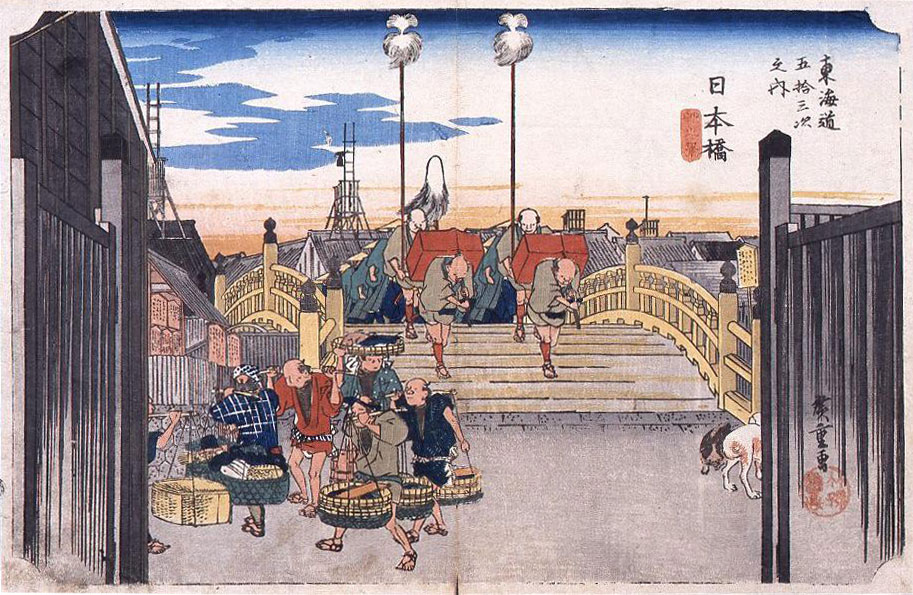
The 53 Stations of the Tokaido in the Hoeido edition, Nihonbashi (including first print) by Utagawa Hiroshige, Edo period
A History of Japanese Print Works Traced through the Kuboso Collection
June 23 (Sun.), 2019 – August 18 (Sun.)
This exhibition traces the historical transition of print works in our collection. The main exhibits are the Dharani Sutra (created during the Nara Period), stored in one of the Hyakumanto (one million pagodas), the oldest traceable publication in the world; and ukiyoe prints and wahon (print books in Japanese bindings) produced during the Edo Period. Other exhibits include those created using a variety of techniques, such as Buddhist images printed in ink from the Heian Period, Saga Books with woodblock prints from the early Edo Period, as well as Ito Jakuchu’s rubbing prints and Shiba Kokan’s copper-plate prints. This exhibition also displays the former personal collections of print books of Kaizuka Shigeki (Professor Emeritus, Kyoto University) and Sasaki Gozo (Professor Emeritus, Waseda University).
* The selection for the display is planned to change during the exhibition period.
Major Works to Be Exhibited
The 53 Stations of the Tokaido in the Hoeido edition, Nihonbashi (including first print) by Utagawa Hiroshige, Edo period
Actor Ichimura Kamezo as Goro Tokimune by Torii Kiyonobu II, Edo period
Shinobazu Pond by Shiba Kokan, Edo period
Three Kingdoms (Former collection of Kaizuka Shigeki) with preface by Hayashi Gaho, Edo period
Eibutsu Shiga (Former collection of Sasaki Gozo) by Ooka Shunboku, Edo period
Jade Ware and Glassware―Focusing on Ancient China and Modern Europe―
September 1 (Sun.), 2019 – October 20 (Sun.)
Under the theme of jade and glass, both of which allow light to pass through, this exhibition introduces jade ware and glassware of China and Europe from our collection. Jade is a type of mineral, which has been highly valued since the Neolithic age in China, and a material from which a great number of artifacts have been created to date. With regard to glasswork in China, some were fashioned as copies of jade work from ancient time, while colorful works using different colored glass were created during the early modern period. In addition to those from China, this exhibition includes items from Europe, such as ancient colored glass from the Mediterranean region and Bohemian glass from the late 19th to early 20th centuries. This exhibition offers a great opportunity to appreciate the beauty of jade and glass and the elaborate handiwork involved in the ware on display.
Major Works to Be Exhibited
Jade zong with animal mask motif, Neolithic Age, China
Jade axe, Neolithic Age, China
Jade bi disk with grain pattern, Western Han Dynasty, China
Blue and white glass snuff bottle with peonies and butterflies, Qing Dynasty, China
Hexagonal goblet with deer, around 1880, Czech Republic
Gold palmette-patterned decanter, around 1890 to 1910, Czech Republic
“Rendez-vous” through Arts―East Meets West―
November 2 (Sat.), 2019 – December 22 (Sun.)
This exhibition is an Osaka-Tokyo collaboration held at our museum in Izumi City, Osaka, with support from Tokyo Fuji Art Museum, displaying mainly portraits and landscapes created by popular Japanese and European artists among the general population in Japan. It offers an opportunity to learn the different ways of expression, and the unique characteristics of artists from the East and West in the early modern to modern periods. These artworks have been selected from the collections of both museums, and include works by Katsushika Hokusai, Ito Jakuchu, Monet, and Renoir.
* The selection for the display is planned to change during the exhibition period.
Major Works to Be Exhibited
Folding Screen with Design of Flowers of the Four Seasons by attributed to Tawaraya Sosetsu, Edo period, Tokyo Fuji Art Museum
Sliding Door with Design of Moon with Bush Clovers by Suzuki Kiitsu, Edo period, Tokyo Fuji Art Museum
Actor Bando Hikosaburo III as Sagisaka Sanai by Toshusai Sharaku, Edo period, Kuboso Memorial Museum of Arts, Izumi
Young Woman in Red Dress by Auguste Renoir, around 1892, France, Tokyo Fuji Art Museum
Water Lilies by Claude Monet, 1908, France, Tokyo Fuji Art Museum
Dancers by Edgar Degas, around 1879, France, Kuboso Memorial Museum of Arts, Izumi
Regular Exhibition
Gorgeous Genjie―Genji Monogatari Tekagami (Scenes from The Tale of Genji) (Important cultural property)
January 19 (Sun.), 2020 – March 22 (Sun.)
Genji Monogatari Tekagami in our collection is a designated important cultural property, and a compilation of 80 pages, each of which bears a painting by Tosa Mitsuyoshi, an artist of the Tosa School in Senshu(in southern part of Osaka), from the beginning of the early modern period. The passages accompanying each of the scenes were copied by hand by 18 court nobles. Following designation of this work as an important cultural property in 2013, we conducted a preservation/restoration project over four years, starting in 2014. This exhibition is being held to commemorate the completion of the restoration and all 80 pages will be exhibited in rotation.
* The selection for the display is planned to change during the exhibition period.
Major Works to Be Exhibited
Genji Monogatari Tekagami (Important cultural property) by Tosa Mitsuyoshi, 1612




